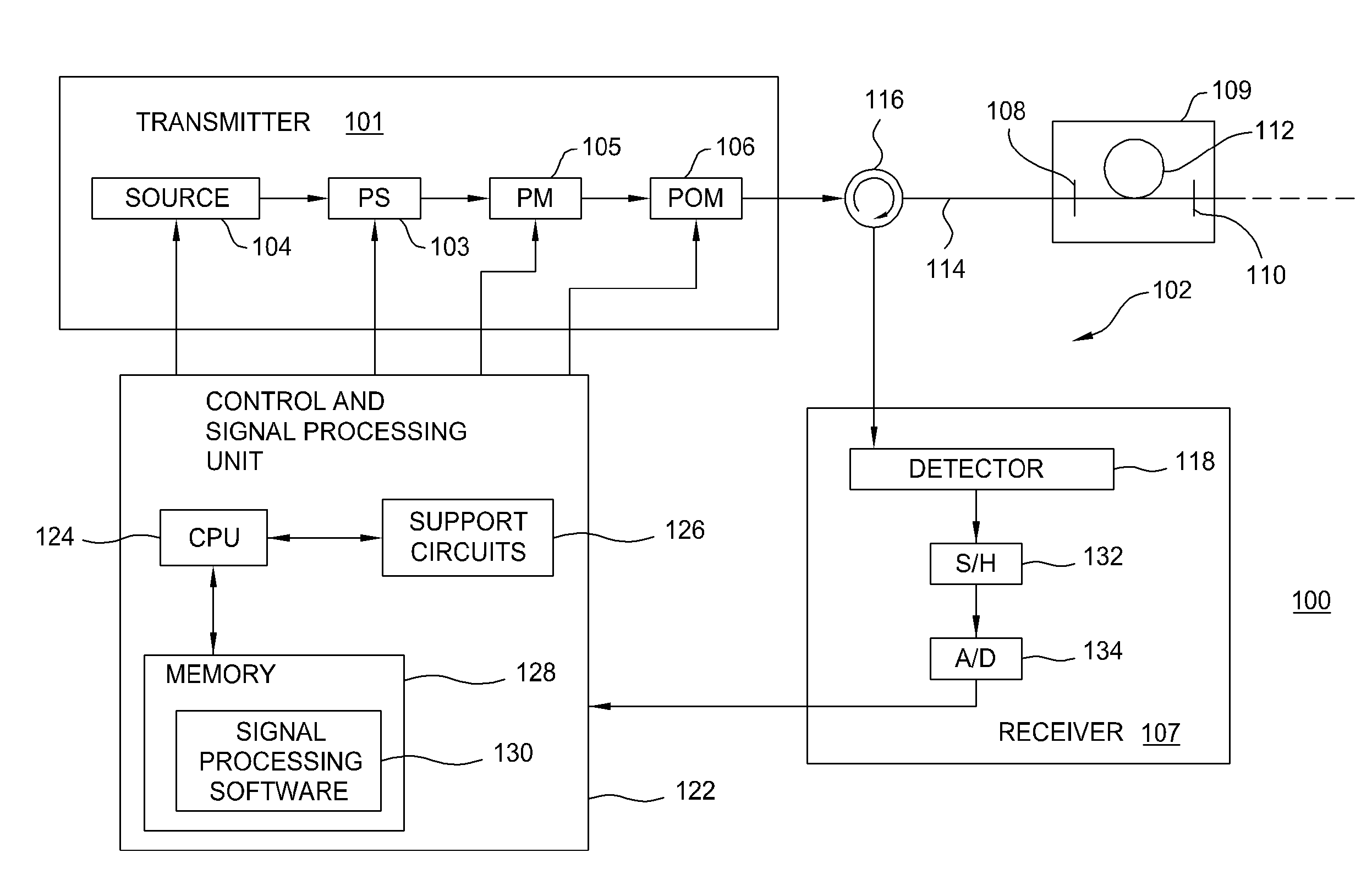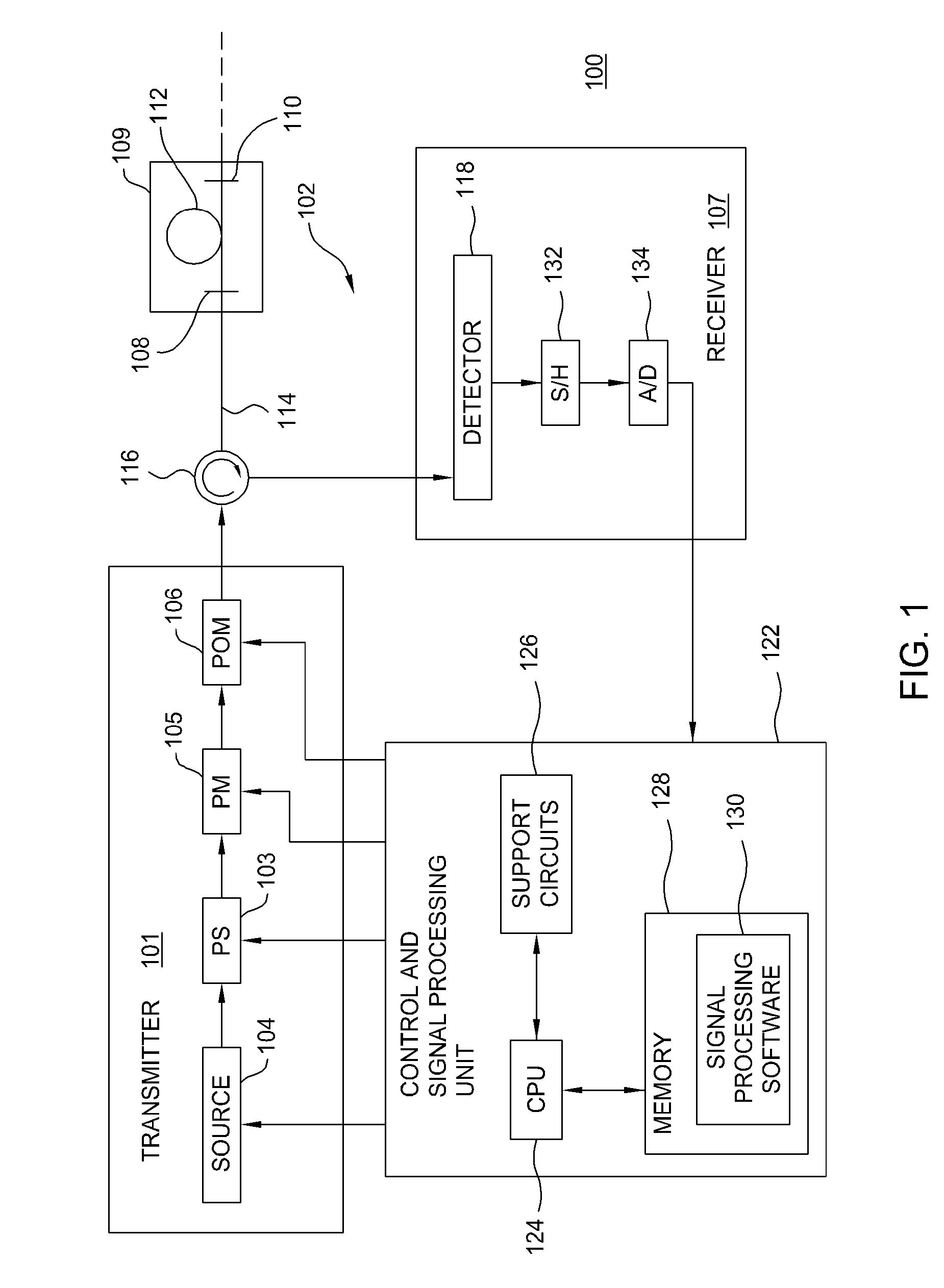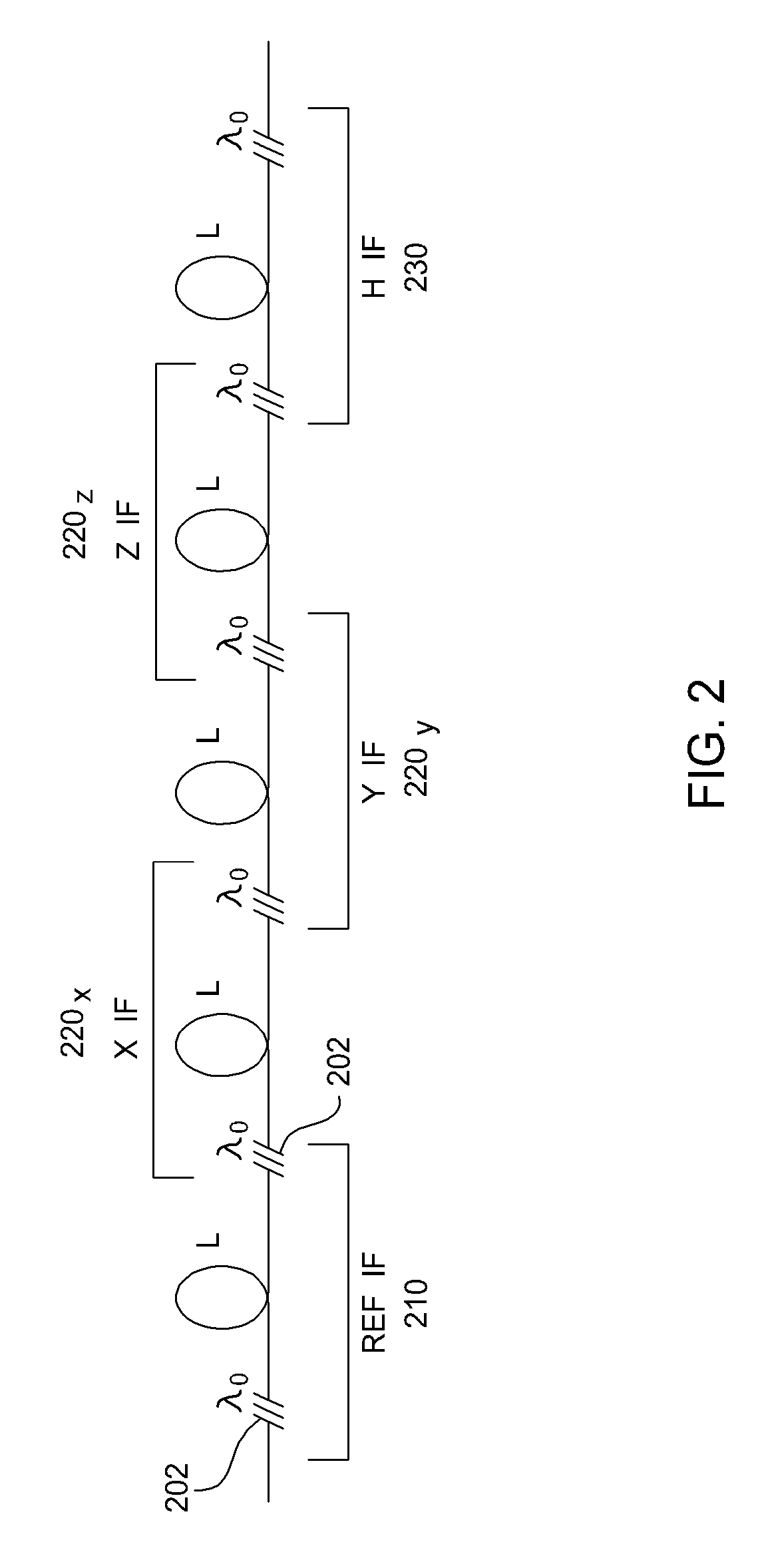Non-uniform sampling to extend dynamic range of interferometric sensors
a sensor and dynamic range technology, applied in the field of optical signal processing techniques, can solve the problems that conventional demodulation techniques may require considerable computation resources and may even be impossible to implement in some signal processing systems
- Summary
- Abstract
- Description
- Claims
- Application Information
AI Technical Summary
Problems solved by technology
Method used
Image
Examples
Embodiment Construction
[0041]Embodiments of the invention generally relate to optical signal processing methods, apparatus, and systems that effectively reduce the bandwidth of the fringe signal in interferometric sensors.
[0042]Ocean bottom seismic (OBS) sensing systems are described below as a particular, but not limiting, example of an application in which embodiments of the present invention may be used to advantage. However, those skilled in the art will recognize that the concepts described herein may be used to similar advantage in a wide variety of other applications in which a large number of optical sensors are interrogated.
[0043]Further, while embodiments of the present invention will be described with reference to optical fibers, those skilled in the art will recognize that any type of suitable optical waveguide may be used as well. Further, while embodiments of the present invention will be described with reference to sensor elements utilizing inline reflective elements such as fiber Bragg gra...
PUM
 Login to View More
Login to View More Abstract
Description
Claims
Application Information
 Login to View More
Login to View More - R&D
- Intellectual Property
- Life Sciences
- Materials
- Tech Scout
- Unparalleled Data Quality
- Higher Quality Content
- 60% Fewer Hallucinations
Browse by: Latest US Patents, China's latest patents, Technical Efficacy Thesaurus, Application Domain, Technology Topic, Popular Technical Reports.
© 2025 PatSnap. All rights reserved.Legal|Privacy policy|Modern Slavery Act Transparency Statement|Sitemap|About US| Contact US: help@patsnap.com



